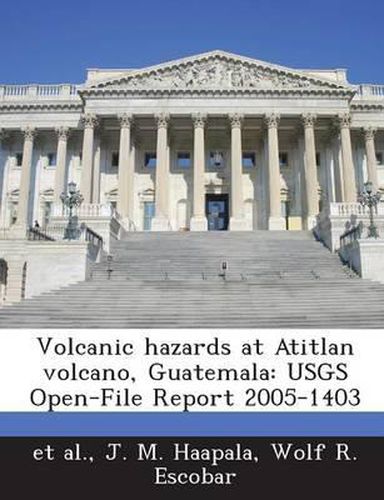Readings Newsletter
Become a Readings Member to make your shopping experience even easier.
Sign in or sign up for free!
You’re not far away from qualifying for FREE standard shipping within Australia
You’ve qualified for FREE standard shipping within Australia
The cart is loading…






Atitlan Volcano is in the Guatemalan Highlands, along a west-northwest trending chain of volcanoes parallel to the mid-American trench. The volcano perches on the southern rim of the Atitlan caldera, which contains Lake Atitlan. Since the major caldera-forming eruption 85 thousand years ago (ka), three stratovolcanoes–San Pedro, Toliman, and Atitlan–have formed in and around the caldera. Atitlan is the youngest and most active of the three volcanoes. Atitlan Volcano is a composite volcano, with a steep-sided, symmetrical cone comprising alternating layers of lava flows, volcanic ash, cinders, blocks, and bombs. Eruptions of Atitlan began more than 10 ka [1] and, since the arrival of the Spanish in the mid-1400’s, eruptions have occurred in six eruptive clusters (1469, 1505, 1579, 1663, 1717, 1826-1856). Owing to its distance from population centers and the limited written record from 200 to 500 years ago, only an incomplete sample of the volcano’s behavior is documented prior to the 1800’s. The geologic record provides a more complete sample of the volcano’s behavior since the 19th century. Geologic and historical data suggest that the intensity and pattern of activity at Atitlan Volcano is similar to that of Fuego Volcano, 44 km to the east, where active eruptions have been observed throughout the historical period. Because of Atitlan’s moderately explosive nature and frequency of eruptions, there is a need for local and regional hazard planning and mitigation efforts. Tourism has flourished in the area; economic pressure has pushed agricultural activity higher up the slopes of Atitlan and closer to the source of possible future volcanic activity. This report summarizes the hazards posed by Atitlan Volcano in the event of renewed activity but does not imply that an eruption is imminent. However, the recognition of potential activity will facilitate hazard and emergency preparedness.
$9.00 standard shipping within Australia
FREE standard shipping within Australia for orders over $100.00
Express & International shipping calculated at checkout
Atitlan Volcano is in the Guatemalan Highlands, along a west-northwest trending chain of volcanoes parallel to the mid-American trench. The volcano perches on the southern rim of the Atitlan caldera, which contains Lake Atitlan. Since the major caldera-forming eruption 85 thousand years ago (ka), three stratovolcanoes–San Pedro, Toliman, and Atitlan–have formed in and around the caldera. Atitlan is the youngest and most active of the three volcanoes. Atitlan Volcano is a composite volcano, with a steep-sided, symmetrical cone comprising alternating layers of lava flows, volcanic ash, cinders, blocks, and bombs. Eruptions of Atitlan began more than 10 ka [1] and, since the arrival of the Spanish in the mid-1400’s, eruptions have occurred in six eruptive clusters (1469, 1505, 1579, 1663, 1717, 1826-1856). Owing to its distance from population centers and the limited written record from 200 to 500 years ago, only an incomplete sample of the volcano’s behavior is documented prior to the 1800’s. The geologic record provides a more complete sample of the volcano’s behavior since the 19th century. Geologic and historical data suggest that the intensity and pattern of activity at Atitlan Volcano is similar to that of Fuego Volcano, 44 km to the east, where active eruptions have been observed throughout the historical period. Because of Atitlan’s moderately explosive nature and frequency of eruptions, there is a need for local and regional hazard planning and mitigation efforts. Tourism has flourished in the area; economic pressure has pushed agricultural activity higher up the slopes of Atitlan and closer to the source of possible future volcanic activity. This report summarizes the hazards posed by Atitlan Volcano in the event of renewed activity but does not imply that an eruption is imminent. However, the recognition of potential activity will facilitate hazard and emergency preparedness.